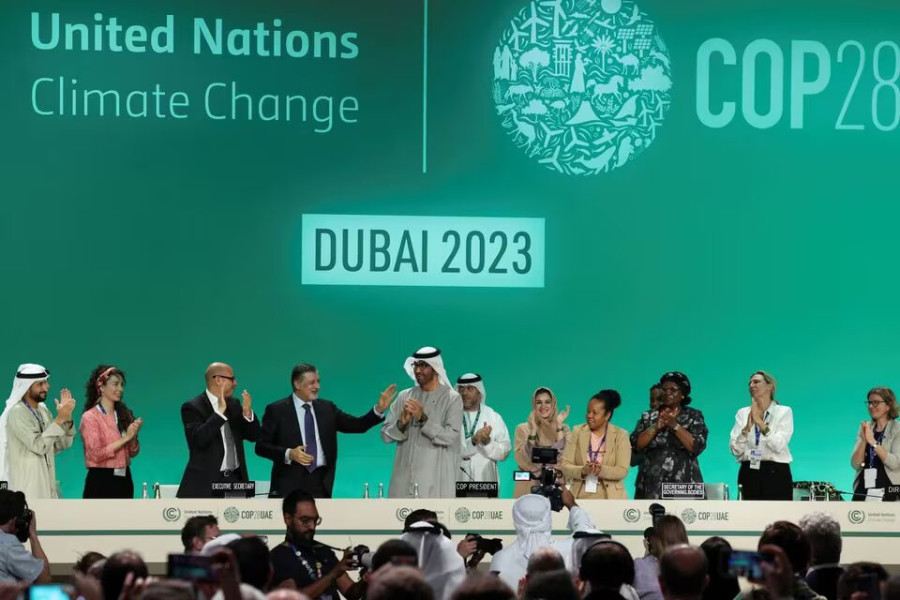Columns
Flawed climate policy
Most policies on climate change are silent on the expected returns on investment in climate adaptation.
Ajaz Ahmed
Notwithstanding Pakistan’s marginal contribution to global greenhouse gas emissions and the country’s greater vulnerability to climate change-driven natural disasters, policymakers seem preoccupied with climate mitigation, ie, GHG emission reduction. COP28 refreshed the resolve of countries to achieve the Nationally Determined Contributions; however, the NDC’s focus in Pakistan is on climate mitigation. For example, the NDC document has ambitious but impractical aspirations relating to climate mitigation and cost estimates. However, it hardly makes a strong case for climate change adaptation.
Most policy documents on climate change are silent on the expected returns on investment in climate adaptation and their direct and indirect benefits. While focusing on GHG emission reductions is important, Pakistan’s current climate policy takes a lopsided view of climate change. Policymakers and planners must understand that what is needed is investment in climate change adaptation, which could protect against the impact of natural disasters driven by climate change.
A poor country’s resource-constrained government may invest billions in critical basic infrastructure like roads, schools, and water supply. But one bout of monsoon flooding knocks down what took decades to build. Such damage aggravates the vulnerability of affected communities by impeding their access to resources and services, and results in delayed recovery.
Conversely, access to basic services improves adaptive capacity and builds community resilience, whereas investing in climate adaptation can protect key infrastructure, resulting in mitigating loss and damage and helping avoid the cost of rebuilding. The relinquished resources in terms of avoided cost could be used for high-impact investments in areas such as human resource development.
Investing in climate adaptation is also critical to preventing the aggravation of existing socioeconomic challenges such as poverty, inequality, unemployment, gender disparity, and food insecurity. These challenges often get worse when a natural disaster hits, as the masses are pushed into poverty and hunger. However, climate resilience can save human lives in addition to reducing the economic cost of natural disasters, which cannot be achieved through focusing simply on emission reduction.
Over a third of Pakistan’s population is involved in the agriculture sector, which is directly exposed to climate change-driven natural disasters, resulting in serious implications for food security and livelihood of the low-skilled rural population. The 2023 FAO report on the state of food security and nutrition says that over half of Pakistan’s population suffers from moderate to severe food insecurity. This underscores the need to protect the agriculture sector against a worse food crisis.
Climate change’s impact on agriculture also has serious repercussions for industry through its linkages with the sector, which uses agricultural output as an input. This affects industrial output and thereby the overall performance of the economy. Moreover, the risk also means adverse impacts for aligned businesses such as seeds, agrochemicals, rented machinery, etc.
It is important to highlight that Pakistan has a relatively big informal economy which provides livelihood to a large fraction of low-skilled workers, who mostly comprise poor rural migrants. Climate change-driven natural disasters often destroy small business establishments such as roadside cafes or food stalls, resulting in the masses slipping into poverty and unemployment. One remedy is to climate-proof these small businesses. This can be helpful in the recovery and building of resilience of the domestic economy. It might require only simple actions such as training and information about climate change and extreme weather events.
Lastly, the implementation of climate adaptation has diverse possibilities from the investment point of view. For example, there are several low-cost climate-adaptation options, which could be taken up by households and local communities with minimal institutional support. The use of nature-based adaptation options for temperature and flood management, farmers’ capacity development, and timely communication of disaster information are just a few examples. However, implementing climate mitigation is generally high cost and can only be financed by an institution. It has a minimal potential for climate risk mitigation in the short run. Thus, investing in climate adaptation not only makes economic sense but is, with the more prudent use of scarce resources, also a high-value investment.
—Dawn (Pakistan)/ANN




 19.12°C Kathmandu
19.12°C Kathmandu















